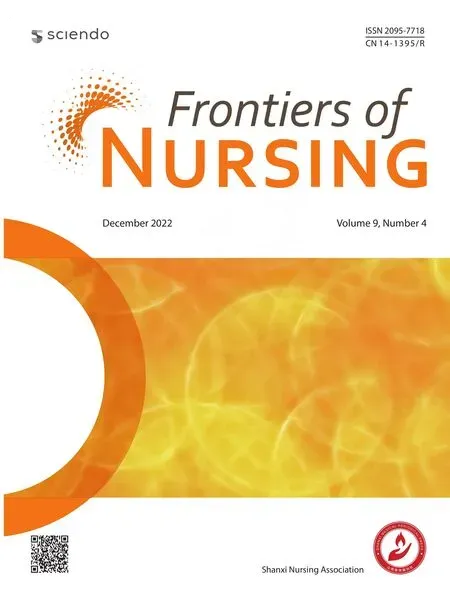Dehydration risk factors and outcomes in older people in rural areas
Mostafa Shaan, Nagat Hai, Inas Helmy, Huda Hamdy Mohammed
aGerontological Nursing Department, Faculty of Nursing, Cairo University, Cairo 12613, Egypt
bCommunity Health Nursing – Faculty of Nursing, Cairo University, Cairo 12613, Egypt
cMaternal & Newborn Health Nursing, Faculty of Nursing, Helwan University, Cairo 11795, Egypt
Abstract: Objective: To determine the risk factors for dehydration in elderly people in one of Elbehira Governorate’s villages.Methods: A descriptive correlational design was utilized in this study. The study was conducted at Elnemaria village, Markaz Abo Elmatamir, Elbehira Governorate, Egypt. Data were collected using 3 tools: a structured interviewing questionnaire, a dehydration knowledge questionnaire, and a dehydration risk appraisal checklist.Results: The study found that 29.5% of the participants were aged between 65 and 70. Males constituted 51% of the study participants. The majority of the study participants regularly took anti-acids, anti-inflammatory drugs, and diuretics. Among the elderlies comprising the respondents, 40% had a low level of knowledge regarding dehydration. More than half of the study subjects were at moderate risk for dehydration.Conclusions: The study showed that half of the participants had diabetes and a medium level of information about dehydration. The study also showed in general that the elderly in the village are exposed to a moderate dehydration rate, and there is also a strong relationship between taking different types of medication and the occurrence of dehydration.
Keywords: clinical signs • dehydration • elderly • functional signs • physiological signs
1. Introduction
Dehydration among the elderly is a neglected health concern that is one of the most common silent plagues. Dehydration is defined as a reduction in total body water volume, and it is considered severe when >3% of body weight is lost. However, determining how much weight has been lost and if it is all due to water loss can be difficult. Dehydration is commonly seen when biochemical indicators and clinical features change.1
Sweating, urine, and exhaling during breathing are all ways in which water is lost. Dehydration in the elderly is prevalent for several reasons: some medications are diuretics or cause patients to sweat more. A person’s sense of thirst gets less intense as they age. As the bodies of elderlies lose renal function, they are less able to preserve fluid. Dehydration in the elderly can be caused by an illness that produces vomiting and diarrhea.2–4Some older individuals intentionally limit their water intake to cope with incontinence. In contrast, others may not drink enough to meet their fluid requirements because their mobility is compromised to the point where they are unable to obtain something to drink.5,6
Acute illnesses such as pneumonia, urinary tract infections, and various chronic conditions are risk factors for dehydration in the elderly. Also, fever, diarrhea, vomiting, any major surgery, gastrointestinal bleeding, swallowing problems, and certain medications (diuretics, laxatives, and some heart medications) may trigger dehydration.7People with mild to moderate dehydration who can drink and are not experiencing severe mental or physical symptoms as a result of fluid loss may be able to replenish their losses orally. Fluids can be replenished through the mouth (orally), veins (intravenously), or a stomach tube depending on the person’s health. Dehydration might be a normal part of death that occurs due to old age.8
1.1. Dehydration operational definition
Dehydration is a state of the body in which it is losing internal fluids at such a rate that the amount of fluid lost from the body in a given duration of time exceeds the amount that the body is able to recuperate for naturally within the same duration, which exposes the body to a state of fluid imbalance, thus hindering the body’s performance of its vital functions. The elderly can realize that he is having dehydration if he feels the easily recognizable and familiar symptoms, which include dry skin with a feeling of thirst, dry mouth, scarcity of tears in the eyes, less urine than usual with a darker color, and a sense of fatigue and dizziness without any other known cause.
1.2. Significance of the study
The community health nurse’s role in preventing dehydration in the elderly necessitates knowledge of the risk factors for dehydration to prevent it, initiate early treatment, and prevent progression to more severe dehydration, which may necessitate costly and potentially avoidable hospitalization. Nurses face a complex and difficult task in getting older individuals to drink. Preventing dehydration in older people is critical for health professionals working in both hospitals and care homes. Therefore, this study aimed to assess the risk factors and their outcomes associated with dehydration among elderly people at one of the villages of El Behera Governorate.
2. Methods
2.1. Research questions
To achieve the aim of the study, the following research questions were formulated:
1. What are the risk factors and their outcomes associated with dehydration among elderly people at a typical village in El Behera Governorate, for example, Elnemaria village?
2. What is the relationship between dehydration risk factors and total dehydration risk?
2.2. Research design
A descriptive, correlational design was utilized in this study.
2.3. Setting
The study was conducted in Elnemaria village, one of the Abo ElMatamire villages in Elbehira Governorate, Egypt.
2.4. Sample
A convenient sample of 305 elderly people participated in the current study. Both genders were included.
2.5. Material
A total of 3 tools were used in the current study:
I Socio-demographic data – which is used to evaluate demographic information such as age, gender, and marital status.
II The elderlies’ knowledge about dehydration – to ascertain which a structured checklist of information about dehydration in the elderly, which has been developed by the investigator, consisting of 10 questions, is formulated and provided to the respondents. The questionnaire was scored based on 3 levels of knowledge – a score of 7–10 indicated a high level of knowledge, of 4–6 an intermediate level of knowledge, and of 0–3 a low level of knowledge.
III An adapted version of the dehydration risk appraisal checklist – in which the questions consisted of 3 parts: physiological signs of dehydration (6 points), clinical signs of dehydration (8 points), and functional signs of dehydration (9 points). With a maximum score of 23, a score of 18–23 indicates a high risk for dehydration, of 10–17 an intermediate risk, and of 0–9 a low risk.
2.6. Content validity and reliability
The content validity of the study tools (I, II, and III) was ratified by a panel of 3 expert professors in community health nursing. The researcher asked the experts to link each objective with its respective items, assess the relevance of the item to the content addressed by objectives, and judge whether they believe that the items on the tool adequately represent the content in the domain of interest. Then, the researcher employed the α coefficient as the content validity index. Cronbach α was used to ensure the internal consistency of an adapted version of the dehydration risk appraisal checklist; the reliability was 83.2%, withr= 0.83.
2.7. Procedure
The study was carried out in the form of a home visit to the elderly. The visit was a one-time interview with the elderly and their family; due to their low attention span, the house visits were performed for 30–45 min with each client to ensure that the interviews could be completed within the scheduled date. The visits were scheduled twice a week until the sample was finished. The elderly were interviewed in their homes, the objective being to explain the nature and goal of the study, and ethical concerns were fully considered to ensure that the participants’ information and research samples remained confidential. Each participant signed an informed consent form. Participation was entirely voluntary, and secrecy and anonymity were guaranteed.
2.8. Pilot study
A pilot study was conducted with 10% of the total number of participants to investigate and ensure the study tool’s practicability, objectivity, applicability, clarity, sufficiency, content validity, and internal consistency, as well as to identify any possible methodological or instrument difficulties. The outcomes of the pilot research were used to put the recommended statistical analysis methods to the test. The cases from the pilot study were removed from the entire research sample.
2.9. Ethical consideration
The ethics and research committee of Cairo University’s Faculty of Nursing provided a written clearance. Elnemaria’s local unity director provided formal administration clearance. After discussing the study’s nature and objectives, each participant was asked to give their informed consent, either verbally or in writing. To ensure anonymity and secrecy, each assessment sheet was coded, and the subject’s name was not shown on the sheets. Subjects had the option to leave the study at any time. They were guaranteed that the study’s findings would not be used to evaluate their performance.
2.10. Statistical analysis
Once data collection was completed, data were tabulated and analyzed using the Statistical Package for Social Sciences (SPSS) program, version 26. Mean, standard deviation (SD), frequency, percentage, and correlation coefficient were used as descriptive and inferential statistics. APvalue of <0.05 was judged significant, while aPvalue of <0.001 was deemed extremely significant.
3. Results
The demographic characteristics of the elderly studied are listed in Table 1, the findings revealed that 47% of the elderly were aged 60 to <65 years, 29.5% of the elderly were aged 65 to <70 years, 13.1% of the elderly were aged 70 to <75 years, 5.9% of the elderly were aged 75 to <80 years, and 4.3% of the elderly were aged ≥80 years, with a mean age (SD) = 67.475.95. Furthermore, men constitute 51% of the population, while women 49%. Among those polled, 68% are married, with 27.5% widowed. Only 2% of the population is single, whereas 1.3% is divorced. Among those who took part in the study, 93% had siblings. In terms of educational achievement, 55% of individuals can write or read, but just 4% can do both.
Table 2 represents the knowledge that the respondents had about dehydration. The first section is related to understanding the meaning of dehydration. Results showed that 291 (95.4) individuals among the elderly heard about dehydration problems; 94.1% correctly answered that dehydration happens when not having enough fluid. Also, 192 (63%) answered that dehydration occurs when a lot of fluids are lost. Regarding the prevention of dehydration, 268 (87.9%) sought to drink enough fluids (milk, juice, or water). Also, regarding the consequences of dehydration, 250 (82%) have the opinion that dehydration may lead to kidney disease. Figure 1 shows that the elderlies’ level of knowledge was distributed, as 40.3% of the elderlies had a low level of knowledge regarding dehydration. In contrast, 34.8% had a high level of knowledge regarding dehydration.
Table 3 represents the distribution of the medications that increased the risk for dehydration: 81.3%, 80.3%, 77.7%, 65.9%, 29.8%, 14.8%, and 2.3% of the study subjects took anti-acids, anti-inflammatories, diuretics, laxatives, corticosteroids, antidepressants, and chemotherapy, respectively.
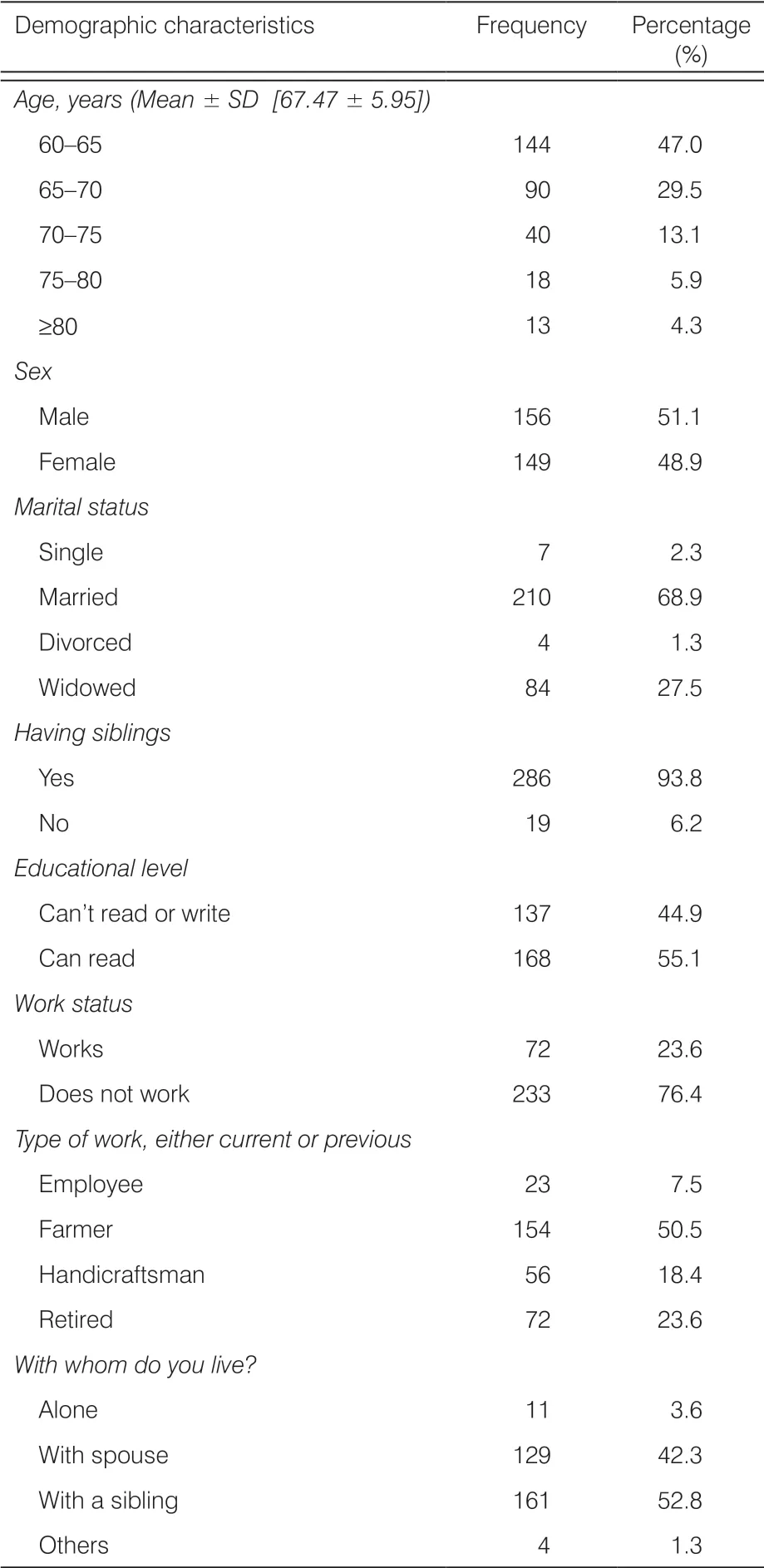
Table 1. Distribution of the study subjects regarding demographic data of the elderly (N = 305).
Table 4 shows that the mean score of physiological signs of dehydration among the elderly was 3.12 ± 1.70 out of the maximum score of 6. The mean score of clinical signs of dehydration was 3.46 ± 1.1 out of the maximum score of 7. The mean score of functional signs of dehydration was 6.65 ± 1.87 out of the total score of 9. The mean score of total dehydration risk among the elderlies participating in the study was 13.02 ± 4.05 out of the maximum score of 23.
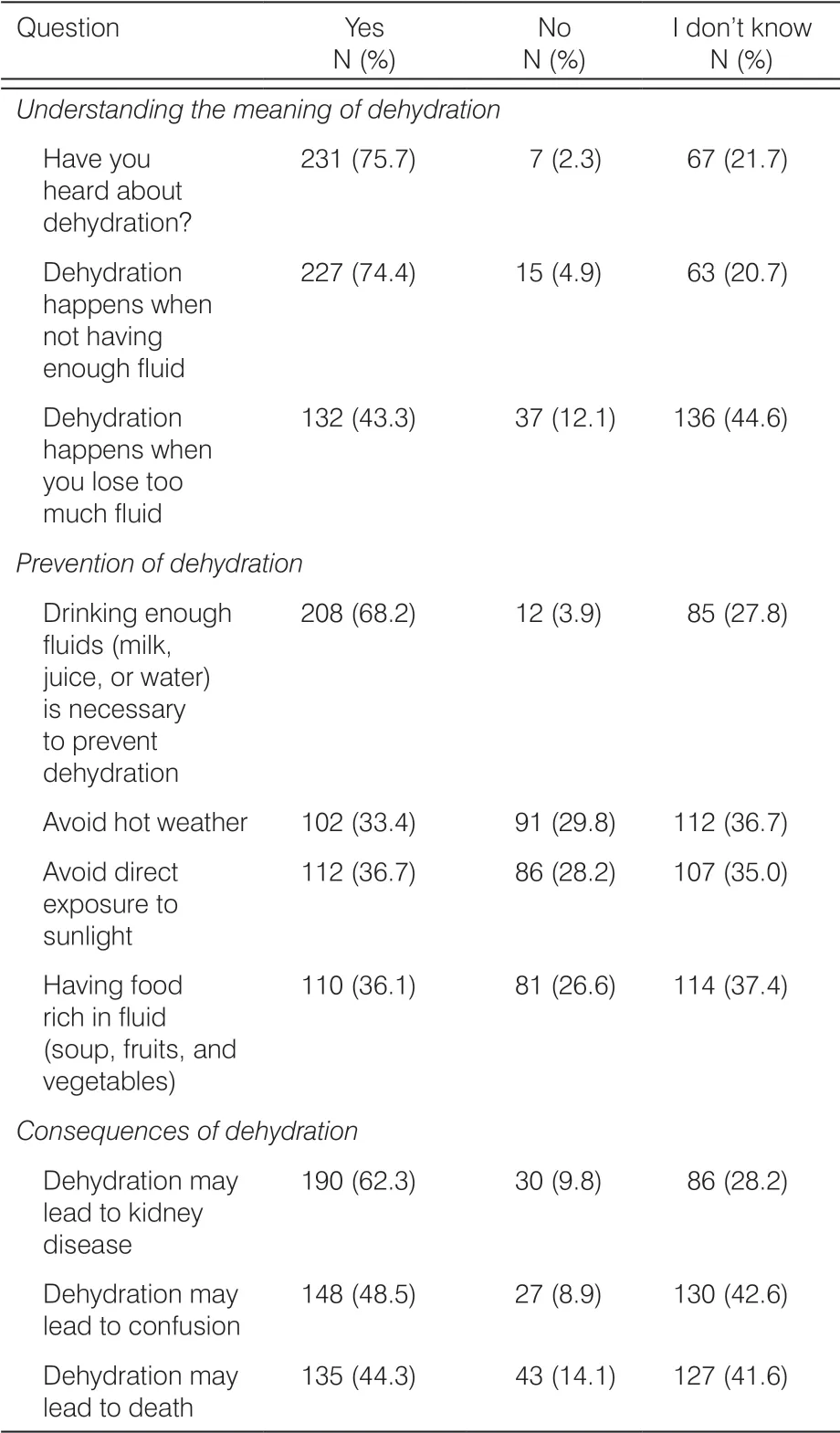
Table 2. Distribution of the study subjects regarding the dehydration knowledge of the elderly (N = 305).
A total score of risk for dehydration among study subjects was calculated to ascertain the risk for dehydration among the elderly people who participated in the study. The results, depicted in Figure 2, are the following: 38.7% of the study subjects are at low risk for dehydration, 52.5% at moderate risk, and 8.9% at high risk.
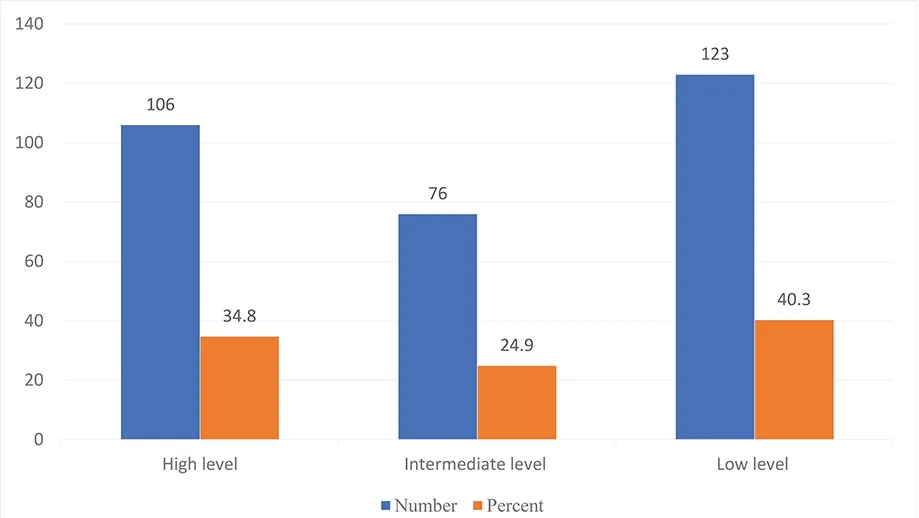
Figure 1. Distribution of the study subjects regarding knowledge level of dehydration in the elderly.
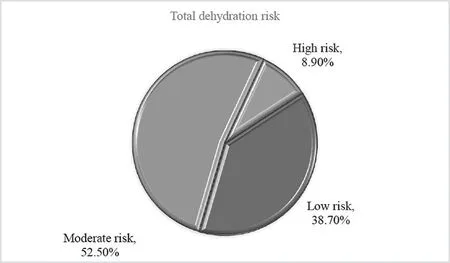
Figure 2. Distribution of the study subjects regarding total dehydration risk (N = 305).
Table 5 illustrates the relationship between different demographic variables and the risk for dehydration. There is a non-significant relation between age and risk for dehydration (X2= 14.708 andP= 0.065). There is no significant relationship between sex and the risk for dehydration (X2= 2.41 andP= 0.298). There is no link between marital status and the risk for dehydration (X2= 10.69,P= 0.098). There is no significant relationship between having children and the risk for dehydration (X2= 1.001 andP= 0.606), but there is a significant relationship between educational level and the risk for dehydration (X2= 63.490 andP= 0.000).

Table 3. The distribution of the medications that increase the risk for dehydration (N = 305).
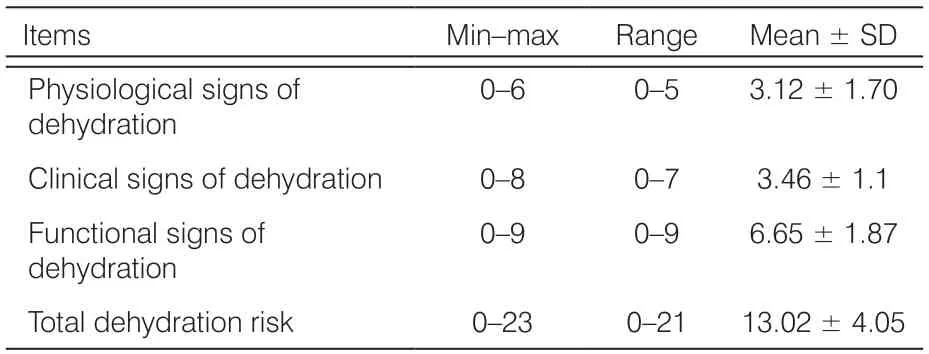
Table 4. The distribution of dehydration appraisal checklist (N = 305).
Table 6 shows that there was a statistically highly significant correlation between anti-inflammatory, antiacid, and corticosteroid medication with the risk for elderly dehydration (P= 0.0001), and a significant statistical correlation between diuretics (P =0.010), laxatives (P= 0.008), and antidepressants (P= 0.007) with the risk for elderly dehydration. In contrast, chemotherapy showed a statistically non-significant correlation with the risk for elderly dehydration (P= 0.795).
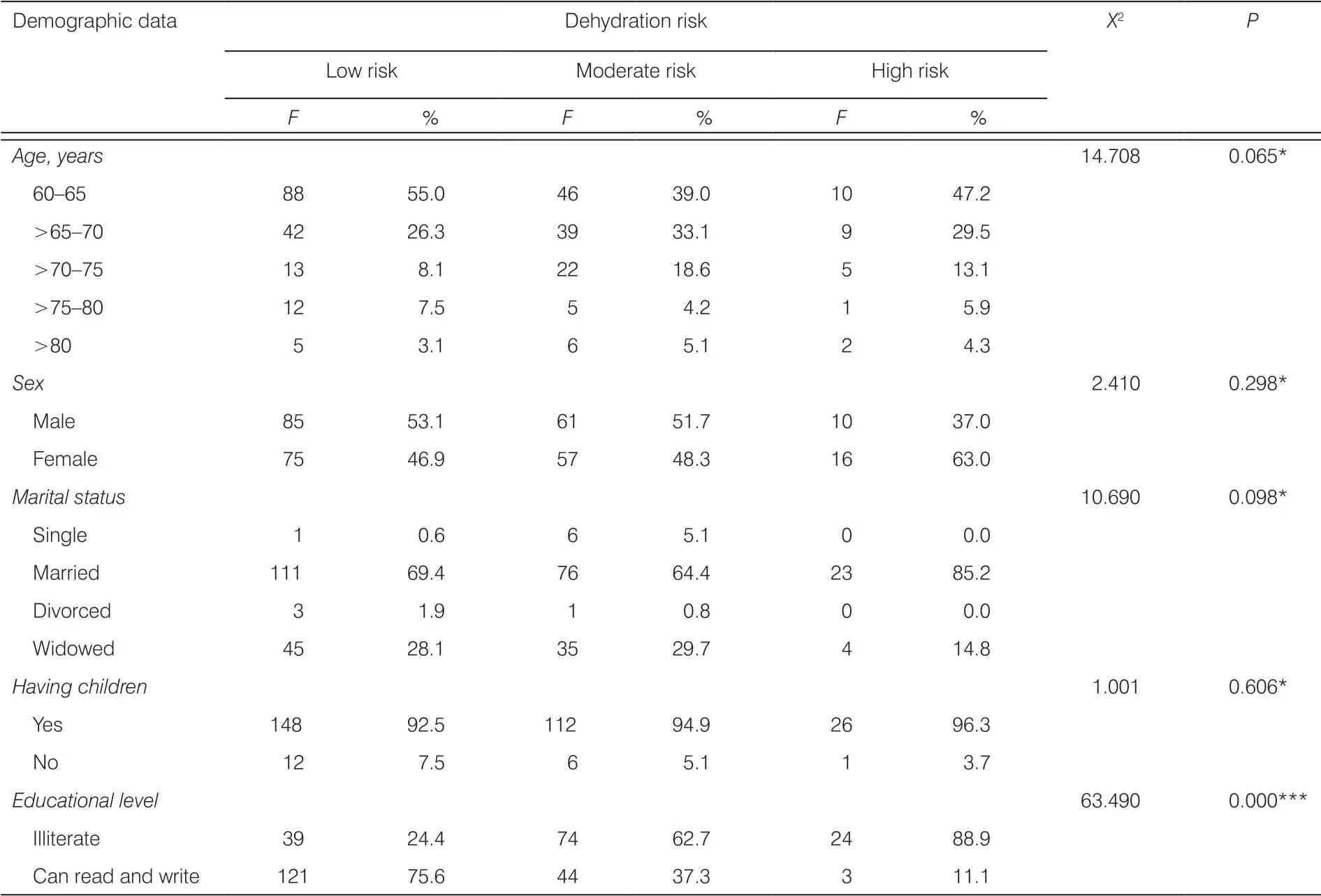
Table 5. Correlation between the type of medication and risk for dehydration (N = 305).
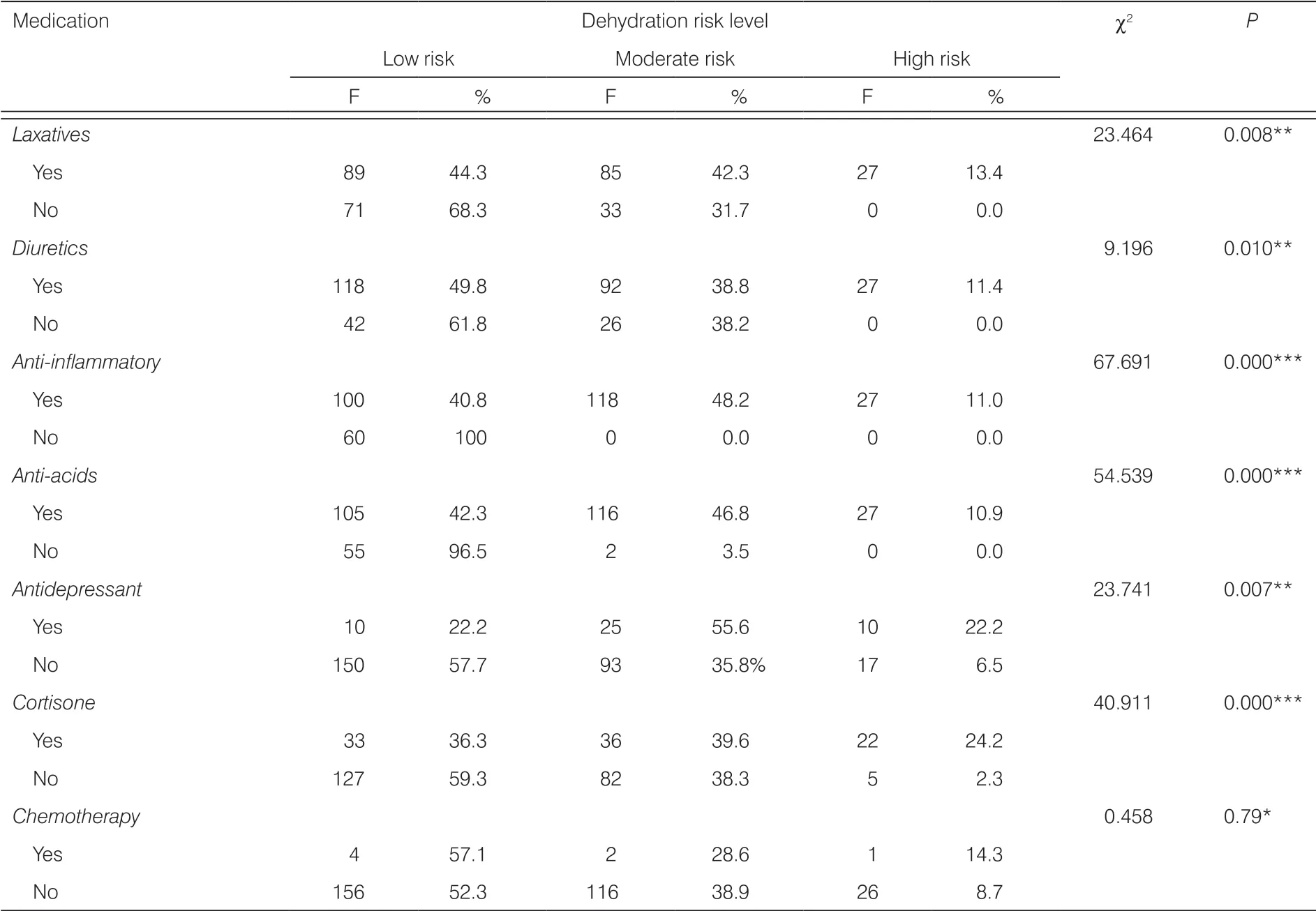
Table 6. Correlation between the type of medication and risk for dehydration (N = 305).
4. Discussion
Given that intra- and interindividual variables may influence risk and the fact that there is no gold standard for quantifying risk for dehydration in ill or healthy persons, determining the risk for dehydration can be difficult.9Measuring the elderlies’ exposure to dehydration is one of the basic tasks of the nurse responsible for providing care to the elderlies. Therefore, knowledge of the factors responsible for dehydration in the elderly is indispensable in such nurses, and they also need to measure and monitor these factors continuously to avoid the undesirable consequences of dehydration.10
The focus of the current study was the measurement of: (i) the risk factors for dehydration in the elderly; (ii) the level of information that the elderlies possess concerning dehydration and the relationship that this level bears to the occurrence of dehydration. The number of elderly participants who agreed to participate in the study was 305, and the average age of the participants was 67.47 ± 5.95 years, which is a reflection of the average age of the elderly in the Arab Republic of Egypt, given the fact that according to the last population census (the 2018 census), it was found that the average age of the population of elderlies in Egypt was 69.04. The study showed that the ratio of males and females was close, as more than half of the participants were males (51%), which is consistent with the Egyptian population report for the year 2018, and this indicates that there was no genderspecific obstacle to participation.11
The majority of the study subjects were married, and close to a quarter were widowed; usually, residents of rural areas tend to adhere to the presence of a partner, and so it becomes clear that most of the elderly are either married or even related to a partner; this is the result of the rural cultural inheritance in Egypt, which emphasizes the importance of the partner, and this agreed with the results of the research by Mendoza et al.,12who explained that marriage in rural Egypt is an essential factor for seeking financial or social support, which is consistent with the results of this research. Also, most of the participants have children who take care of them in old age, which is one of the characteristics of the Egyptian countryside.
Concerning the level of knowledge regarding dehydration, the majority of elderlies had previously heard about dehydration; this is a result of their having lived through exposure to awareness campaigns for dehydration in children, through visual and audio communication means such as television and radio. Despite that, we noticed in the course of our interactions with them that they did not particularly mention dehydration as a serious potential cause for debilitation. However, awareness campaigns about dehydration for children have marginally succeeded in creating such awareness among people in the countryside.13
Despite this awareness, the results showed that 40% have a low level of information about dehydration. This is consistent with the study of Shaheen et al.,14where the extent of public knowledge of the danger of dehydration and factors of its occurrence was measured, yielding results similar to the ones of the current research, where knowledge concerning dehydration was observed to be low across a large percentage of the interviewed elderlies. Additionally, the elderly, despite their knowledge of the dangers of severe dehydration, may still be at risk because of inadequate or missing knowledge in relation to certain other factors, such as the need to drink a sufficient amount of fluids and to compensate for lost fluids, as well as to not be exposed to direct sunlight, which, for many elderlies, is a constant risk factor owing to their regularly working in the fields.
The results of the present study show that elderly people take anti-acids in excessively large dosages or at frequencies that are too high. Anti-acids are drugs used to treat abdominal distension heartburn, and acid indigestion, which are all signs of excessive stomach acid. They are also used to reduce the symptoms of excess gas, such as belching, flatulence, bloating, and stomach/gut pressure/discomfort. Combining the active ingredient in an antacid (in most cases a protonpump inhibitor, such as omeprazole) with aluminum can help manage diarrhea.15In the intestines, aluminum- containing anti-acids bind to phosphate, a vital physiological component. This might result in low phosphate levels, which can contribute to dehydration in the elderly, especially if fluid intake is inadequate.16The current study showed that the elderlies’ consumption of antiinflammatory drugs can be ranked second only to their consumption of anti-acids. With regard to this aspect, the observations of the present study agree with those of Emerson et al.,17who, in their study conducted in the United States principally dealing with the use of non-steroidal anti-inflammatory drugs (NSAIDs), emphasized the dangers of taking anti-inflammatories in the elderly. Prostaglandins, which are hormones that regulate blood flow to the kidneys, are inhibited by NSAIDs. NSAIDs can cause kidney damage or failure in people who have been dehydrated previously, especially youngsters and the elderly.18–20
The present study supports the view that medication has a prominent effect on the risk for dehydration, as the results concluded a highly significant correlation between dehydration and intake of anti-acids, antiinflammatories, and cortisone. Cortisone also causes disturbances in the balance of body fluids, causing fluid transfer from inside the cells to their outside, affecting the osmotic pressure of the cells, which leads to an increase in the risk for dehydration among the elderly.
Although diuretics are best known as a major cause of dehydration, in the present study, they were ascertained as the third-most common cause of dehydration in the elderly; the study showed a statistical relationship between diuretics and dehydration among the elderly. Diuretics, in general, trigger the kidneys to release greater sodium in urine, which then results in the removal of more water from blood, facilitating the removal of this excess water by urination.21With less fluid in elderly veins, blood pressure decreases; this can also contribute to dehydration. Diuretics are medicines that significantly affect the fluid balance in the body, as they increase urine output, which leads to an imbalance in the balance of salts in the body, as well as the exit of fluids from inside the cells to the outside, which leads to an imbalance in the ratio of sodium and potassium in the body.22–24
The study showed that more than half of the participants were moderately exposed to risks for dehydration (when measuring the risk factors). Also, one-tenth of the participants were highly exposed to risks of dehydration, which may be consistent with the insufficient knowledge of the elderly about the seriousness of dehydration and the presence of some chronic diseases that increase exposure to dehydration. Risk factors related to functional signs of dehydration came to the fore, including dependence on others for daily activities, decision- making disorders, and movement disorders.
The studies of both Bunn and Hooper25and Johnson and Hahn26are in agreement with the results of the present study; in their study of the signs of dehydration among the elderly, they indicated that elderly people who drink insufficient amounts of water are more prone to dehydration; and they attribute the dehydration to either the elderlies’ forgetfulness to regularly consume water or their frequent intake of medicines affecting the fluid balance in the body. Also, direct exposure to sunlight plays a role as a factor; it involves elderlies’ direct exposure to the sun arising from their need to go out into the fields and work during the afternoons; this factor becomes involved especially since they are rural inhabitants.
5. Conclusions
The study showed that half of the elderly respondents were diabetic, and that a medium level of information about dehydration was the one that largely prevailed in the elderlies (among the various levels formulated based on the questionnaire developed). The study also showed that, in general, the elderlies in the village were exposed to a moderate rate of dehydration; and a strong relationship was also demonstrated between taking various types of medication and the occurrence of dehydration.
Recommendations
1. Improve water intake habits among the elderly;
2. Provide society with knowledge about the risk factors for dehydration among the elderly;
3. Increase water intake along with the intake of medications that increase the risk for dehydration; and
4. Conduct additional research to assess and prevent various risk factors for dehydration.
Acknowledgments
All elderly participants in the study research are thanked, and particular thanks go to Dr Reem Hamdy, Professor of Immunology, Rheumatology, and Rehabilitation at the Qasr AlAiny Faculty of Medicine, for her invaluable advice and assistance.
Ethical approval
This study was approved by the ethics committee of Cairo University’s Faculty of Nursing.
Conflicts of interest
All contributing authors declare no conflicts of interest.
- Frontiers of Nursing的其它文章
- Inhaler use in chronic obstructive pulmonary disease patients: a meta-analysis†
- Repeated measurements of depression and outcomes in patients receiving hemodialysis†
- Depressive symptoms, social support, cognitive function, and stigma: predictors of resilience in caregivers of children with intellectual disabilities
- Clinical nursing visual health education pathway for patients with perianal abscess†
- Predictive roles of organizational and personal factors in work engagement among nurses
- Evaluation of the efficacy of Tian dan shu gan rehabilitation exercise in improving the short-term quality of life of patients with acute myocardial infarction after percutaneous coronary intervention

